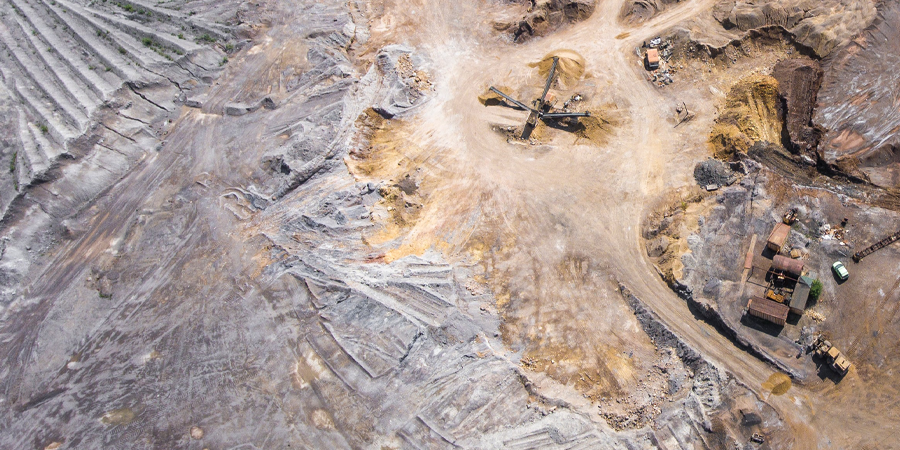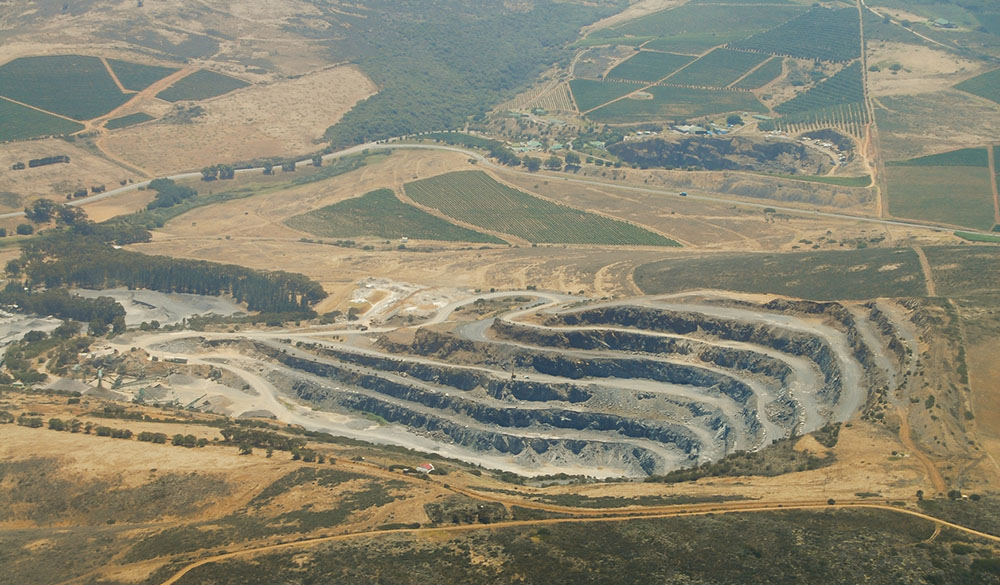According to Minerals Council South Africa, in 2022, the mining sector contributed 7.3% to South Africa’s GDP (R483 billion) and employed over 469,000 workers. In the same year, mineral exports amounted to R882 billion, equivalent to almost 14% of GDP. This valuable contribution could be at risk as the physical impacts from climate change, such as floods, droughts, extreme weather events and rising temperatures, become more widespread. There is also a risk to businesses, that as the economy decarbonises, they could be left behind if they also fail to transition to low carbon operations.
What are South Africa's physical climate change risks?
Prolonged droughts and increased water-scarcity are a particular concern for South Africa. These risks can disrupt extraction processes and affect ore processing and output. The ripple effect extends to increased operational costs, potential job losses and heightened competition for water resources with local communities. Mines that rely on water-intensive methods find themselves particularly vulnerable, facing production constraints that impact their ability to meet demand.
Likewise, flooding and severe storms can damage on-site and supporting infrastructure, such as roads, railways and ports. Not only can these lead to an increase in direct costs due to damages, but can also lead to disruptions in production, increased operational costs and capital costs. This is particularly concerning for South Africa, as a 1.5C warmer world globally will translate into a 3C rise in southern Africa. This makes South Africa’s mining sector more exposed to the physical risks of climate change compared to the global average.
What are South Africa’s mining transition risks?
At the same time, several of South Africa’s key trading partners are beginning to implement policies and regulations to combat climate change. This will create a shift in international demand and international trade, creating transition risks for the sector. South Africa currently depends on fossil fuel exports, and carbon-intensive mining and electricity sectors, exposing it to significant transition risks. If these are not addressed, the country will suffer from reduced exports, a dip in international competitiveness and GDP, and lost jobs.
Shifting international demand will put two of South Africa’s four largest commodities at risk; Platinum Group Metals (PGMs), and coal. In 2019, these two commodities accounted for about 50% of the country’s total mining sales, at an estimated value of R264 billion. They also provided 266,000 direct jobs.
Short-term, the global demand for coal is likely to remain stable, but increasing pressure to phase it out is likely to see a demand drop in the next 10 to 15 years. PGMs will also face shifting demand patterns, with an expected decrease in demand as the world transitions from internal combustion engines to battery electric vehicles. However, there is potential for increasing demand for PGMs as they are used in green hydrogen fuel cells.
The mining sector will also face increasing international trade risks, especially from the European Union’s Carbon Border Adjustment Mechanism (CBAM). The CBAM is essentially a carbon tax on imports to the EU based on their embedded greenhouse gas (GHG) emissions. Initially, the CBAM will cover fertilisers, electric energy production, cement, aluminium, hydrogen, iron and steel, as well as some critical input materials like iron ore, with additional products to be added after 2026. According to a TIPS report, the CBAM will put a total of R52 billion (based on 2022 data) worth of exports at risk. This has direct implications for South Africa’s iron ore, iron, steel and aluminium exports and by extension, our international competitiveness, balance of payments, jobs and GDP growth.
What are the opportunities? How can companies take advantage of these?
Addressing these risks, both physical and transition, are important but they also present opportunities.
Forward thinking businesses could use the climate crisis to kick-start South Africa’s just transition and contribute to broader sustainable development across the African continent. The mining sector should embrace the transition as a positive disruption opportunity in and of itself. It presents an opportunity for holistic business transformation and positive social contributions beyond just corporate taxes and royalties.
Adapting to the physical impacts of climate change can provide environmental and social co-benefits. For example, investing in strategic wetland rehabilitation or conservation could support flood mitigation at a mine site and benefit neighbouring communities; avoiding both flood damage and production delays. The same wetland could provide other ecosystem services, such as promoting biodiversity, fishing and small-scale farming opportunities for local communities. In fact, most climate adaptation interventions have environmental and social co-benefits that enable positive socio-economic opportunities.
A climate-resilient business also reports their GHG emissions annually, which helps them to monitor progress towards their decarbonisation targets. Reducing emissions is a win-win-win for any mining company. Firstly, it helps avoid future climate change impacts. Secondly, it avoids exposure to transition risks, such as carbon taxes, and provides cost saving opportunities. Lastly, it provides a competitive advantage in a low-carbon global economy.
Mining companies in South Africa also need to consider the risks and opportunities hidden in their commodity portfolios. They should consider shifting their portfolios in line with critical mineral demand forecasts to tap into new value pools and build new value chains. Multistakeholder collaboration will be critical for building new “green metal value chains” and supporting infrastructure. Investing in new sustainable industries has various socio-economic co-benefits beyond new export markets and direct job opportunities. These co-benefits can support and enable a just transition more broadly across South Africa and the wider continent.
Strategically thinking about and responding to climate change risks and opportunities can give the South African mining sector the upper hand. While the sector faces unprecedented challenges in the face of climate change, it is also presented with a unique opportunity to reinvent itself through positive disruption. But opportunity alone is not enough - acting on climate risks and opportunities is positive disruption.






